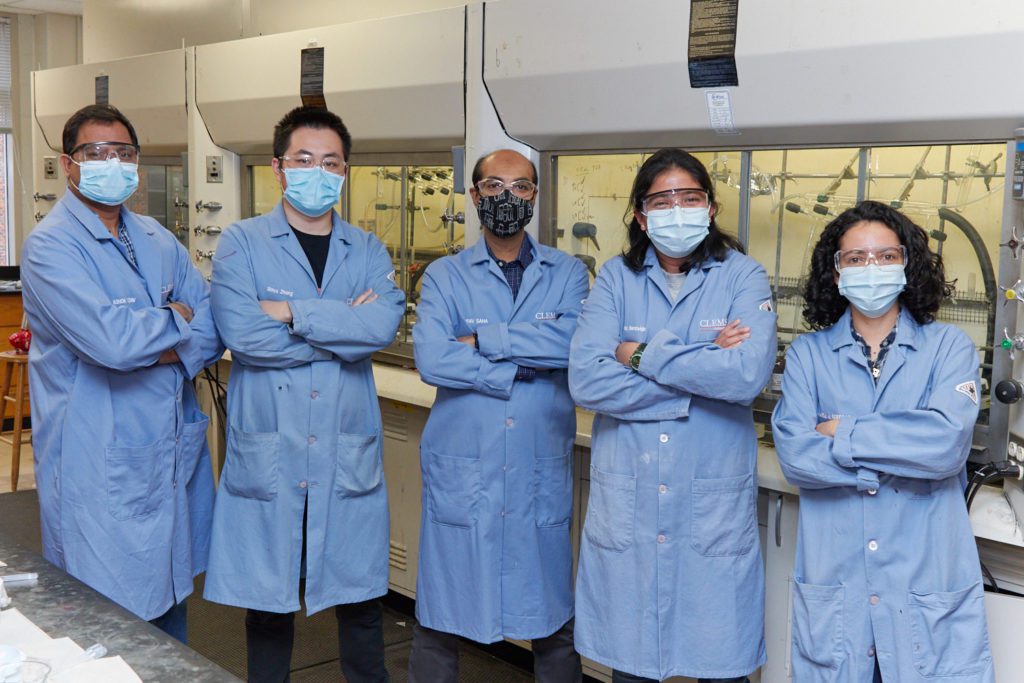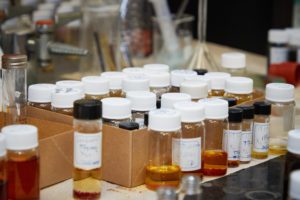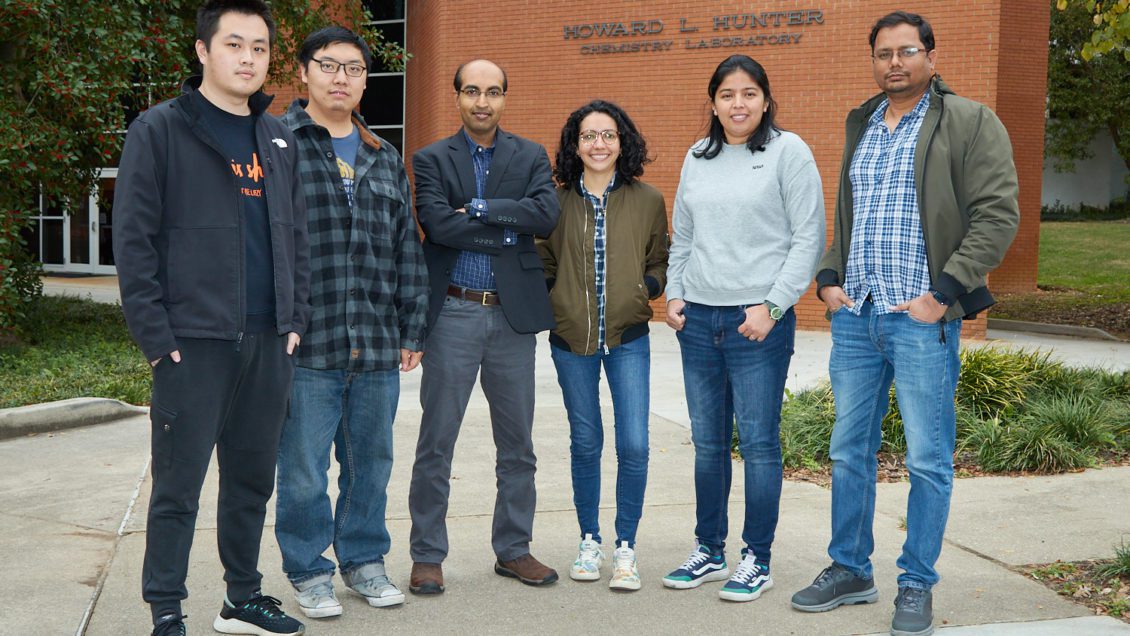A team of Clemson University scientists led by Associate Professor of Chemistry Sourav Saha has made advances in electrically conducting metal-organic frameworks, or MOFs. These “smart,” tunable electronic materials have a myriad potential applications as semiconductors, sensors and energy storage systems.
MOFs are one-, two-, or three-dimensional nanoscale architectures consisting of metal ions or clusters that serve as corners and are connected by organic ligands that serve as the linkers.
“Think about a traditional cube-like building, but think about it in micron or nanometer scale,” Saha explained. “In MOFs, the organic ligands are the beams and pillars, or walls and floors, which are connected by metal ions of clusters located at the corners.”
One critical feature of MOFs is that they are usually porous. “Just like buildings can host people, these porous materials can host small molecules,” Saha said.

Early on, researchers mostly focused on MOFs’ gas-storage capabilities. With the introduction of electro- and photo-active components, much of the focus in recent years has shifted to MOFs’ ability to transport and store electrical charges, sensing and catalytic activities. Making electrically conducting MOFs is challenging because “on top of furnishing them with accessible charge carriers, you have to create efficient and well-defined charge-transport pathways so that those charges can flow across porous frameworks,” Saha explained.
Ability to communicate
“If the frameworks are too porous and the ligands are located too far apart, they cannot communicate with each other or talk to each other electronically. That’s why it’s typically so difficult to make semi-conducting or electrically conducting MOFs,” Saha said. “But if you can design an architecture that will allow these ligands to talk to each other electronically, then you enable a flow of electrons through these crystalline materials just like traditional inorganic semiconductors that grace virtually all electronic devices today, and that’s the key.”
“My research group has been trying to design MOFs in a way that the redox-active building blocks, which are the source of mobile charges, can communicate with each other and allow these charges to flow smoothly, which is the key to engineering electrical conductivity,” Saha said of the overall goal of his research.

Their findings were recently reported in two peer-reviewed articles.
Chemical Science, the flagship journal of the Royal Chemical Society of UK, published “Effects of Intervalence Charge Transfer Interaction Between π-Stacked Mixed Valent Tetrathiafulvalene Ligands on the Electrical Conductivity of 3D Metal-Organic Frameworks.”
In that project, Saha and his fellow researchers Shiyu Zhang, Dillip Panda and Ashok Yadav, along with collaborator Wei Zhou from the National Institute of Standards and Technology, developed and studied four new alkali metal (sodium, potassium, rubidium and cesium)- based frameworks featuring an electron-rich tetrathiafulvalene ligand.
Influencing transport properties
The study demonstrated how the arrangement and oxidation states of the ligands inside these frameworks influenced their electronic, optical and charge transport properties. The findings shed light on the electron transport pathways inside these MOFs and presented a promising design strategy for electrically conductive MOFs.
Frontiers in Chemistry, another reputable open-access journal, published “A New Electrically Conducting Meta-Organic Framework Featuring U-Shaped cis-Dipyridyl Tetrathiafulvalene Ligands.”
Saha and co-authors Monica Gordillo, Paola Benavides and Kaybriana Spalding synthesized a unique architecture, dubbed as a sine-MOF, using a U-shaped electron rich ligand, which was located in an alternating up and down fashion forming sinusoidal waves between the metal cluster nodes.
Conductivity increase
The team discovered that the sine-MOF’s electrical conductivity increased 50-fold after iodine mediated partial oxidation of the electron-rich ligands. They postulated this was largely due to increased charge-carrier concentration because the framework lacked efficient charge-transport pathways. “These studies not only presented a novel electronic MOF architecture but also showed that a high charge carrier concentration alone is not sufficient for high electrical conductivity unless a framework is also equipped with effective charge transport pathways,” the researchers found.

The work has particular implications for developing a new generation of semiconductors used in diodes, transistors and capacitors critical to virtually all modern electronic devices, from our communication devices to the vehicles we drive.
MOFs offer an array of potential benefits in the field of electronics. In previous studies, Saha has experimented with using MOFs to store electrical energy in the form of lithium ions, technology that could fuel the next generation of lithium-ion batteries for everything from cell phones to electric vehicles.
“The energy and environmental fields could really benefit from this kind of research,” Saha said.
Grants from the National Science Foundation supported this research.
The College of Science pursues excellence in scientific discovery, learning and engagement that is both locally relevant and globally impactful. The life, physical and mathematical sciences converge to tackle some of tomorrow’s scientific challenges, and our faculty are preparing the next generation of leading scientists. The College of Science offers high-impact transformational experiences such as research, internships and study abroad to help prepare our graduates for top industries, graduate programs and health professions. clemson.edu/science
Get in touch and we will connect you with the author or another expert.
Or email us at news@clemson.edu

